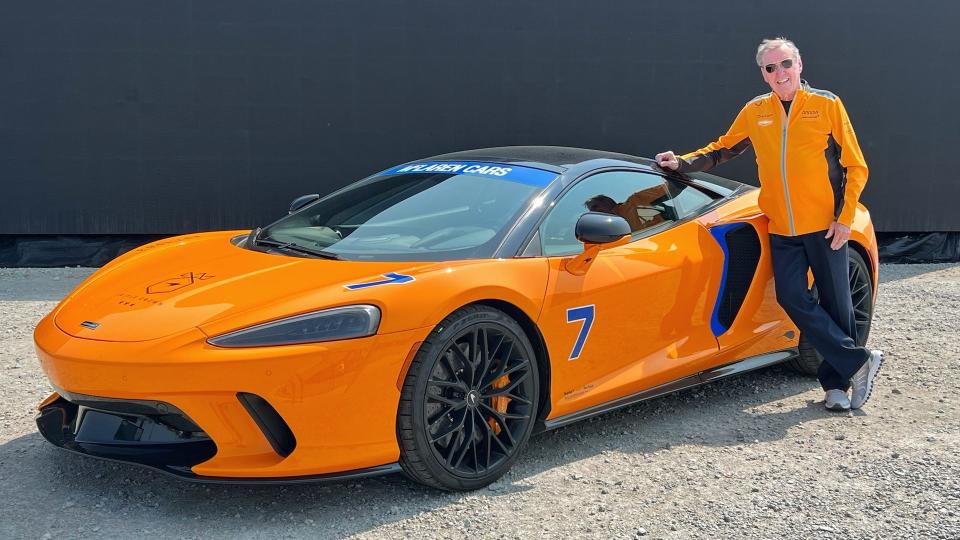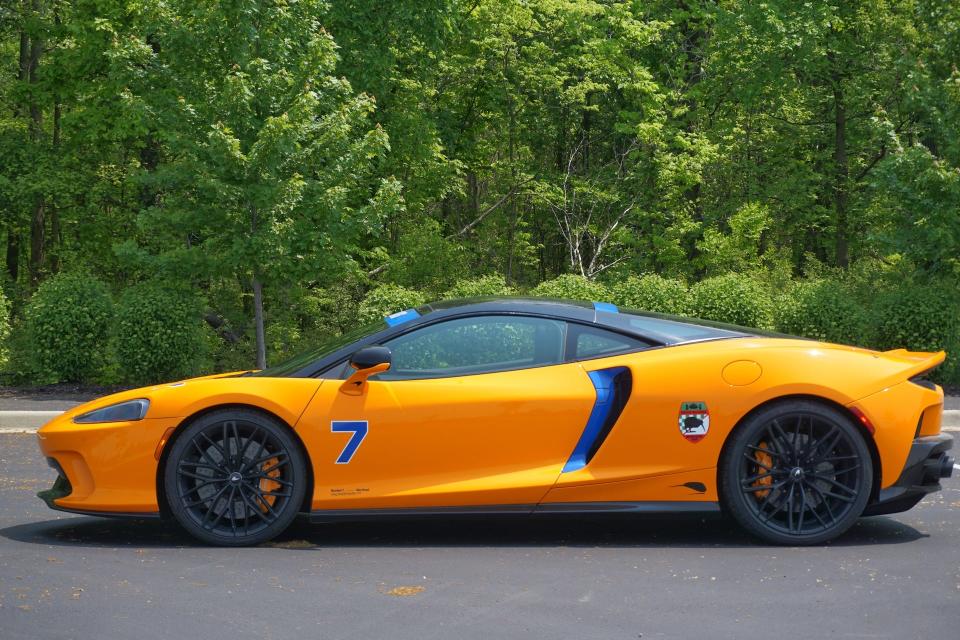How Johnny Rutherford's 1974 Indy 500 Win Kicked Off McLaren's Triple Crown

"I refer to this race track as the 'Old Lady,' and this Old Lady can throw curves at you like you wouldn't believe," three-time Indy 500 champion Johnny Rutherford told me as we reminisced on his 1974 win.
Looking back, that first victory at the Brickyard wasn't just groundbreaking for the Texan, who was 36 years old at the time. It also earned McLaren the first of three milestones that make up motorsport's Triple Crown, a feat that not even Ferrari, Mercedes, or Porsche have managed. The second came in 1984 at the Formula 1 Monaco Grand Prix with Alain Prost, and the third in 1995 at the 24 Hours of Le Mans with JJ Lehto, Yannick Dalmas, and Masanori Sekiya behind the wheel of an F1 GTR.
To celebrate its status as the only racing manufacturer to wear the Triple Crown, the Arrow McLaren IndyCar Team is running four race cars with special liveries at the Indy 500 this year. And to make an even bigger splash, it also shipped four McLaren GT supercars to Indianapolis with four different liveries, one commemorating each of the three historic wins plus one combining all three. (It's also doing something similar in F1 for Monaco.) These GTs were then given to team drivers to wheel around Indy for the month, seriously one-upping other drivers who got Chevy Tahoes and Honda Pilots as their team-issued rides.
The 1974-liveried GT is the crown jewel of the three, per se, given its significance to the local race. It was issued to 2016 Indy 500 winner Alexander Rossi, but McLaren offered it to me for a couple of days. Of course, I didn't mind.





This GT is mechanically identical to the one I reviewed back in 2020, so nothing new there. Same 612-hp, 4.0-liter twin-turbo V8, same fighter jet-like cockpit, and the same doors that make people go "woah!" What is very different about this GT is its exterior and the story behind it. The Papaya Orange GT never stood a chance of flying under the radar, but the new livery makes it an even bigger target on the streets. Across the top of the windshield is a McLaren Cars decal in blue lettering, just like the one on Rutherford's race winner. On the sides, it wears blue racing numbers in the same font as the original car, though this time it has a 7 for Rossi rather than a 3 for Rutherford. And adding to a design already heavy with nostalgia, there's a kiwi motif paying tribute to founder Bruce McLaren, who was from New Zealand. Despite being a British team, McLaren's cars sported these decals up until the '80s.
Rutherford, now 85, had just arrived in Indianapolis a day or two before we met, but unlike today's IndyCar stars, he didn't take a private jet or even a first-class seat to get there. Rutherford drove himself in his pickup truck all the way from Fort Worth, Texas—"straight through," he said, only stopping for fuel. Rutherford's experience earned him a consulting role within Arrow McLaren, where he offers advice to staff on both sides of the pit wall.
After a couple of days filled with passersby breaking their necks to get a glimpse of the McLaren GT and random people snapping photos of me—not the car—around town, I had the opportunity to sit down with Rutherford for a chat. I asked him to take me back to May 1974, an admittedly life-changing month not just for him but also for McLaren.





 Yahoo Autos
Yahoo Autos 